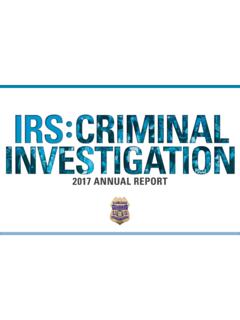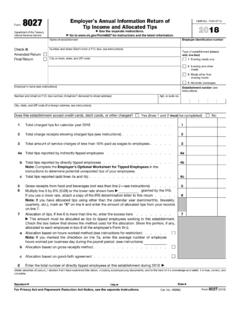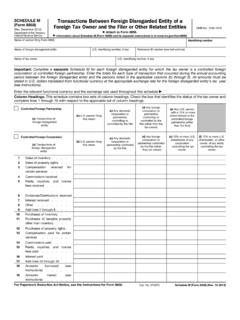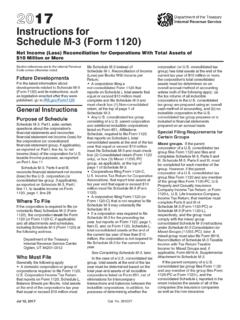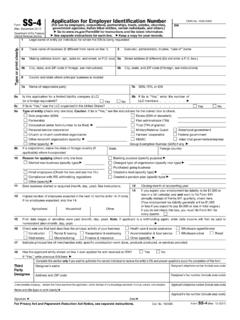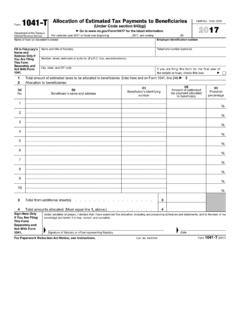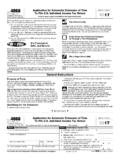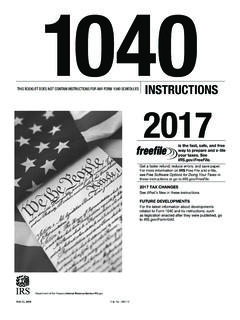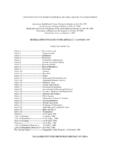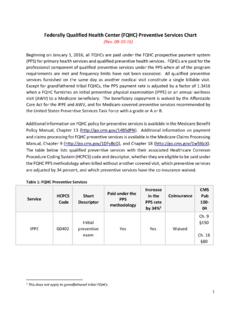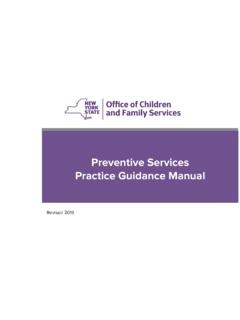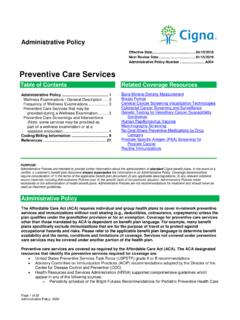Transcription of section 223(c)(2)(C), “[a] plan shall not fail to be ...
1 Additional preventive Care Benefits Permitted to be Provided by a High Deductible Health Plan Under 223. notice 2019-45. PURPOSE. This notice expands the list of preventive care benefits permitted to be provided by a high deductible health plan (HDHP) under section 223(c)(2) of the Internal Revenue Code (Code) without a deductible, or with a deductible below the applicable minimum deductible (self-only or family) for an HDHP. BACKGROUND. section 223 of the Code permits eligible individuals to establish Health Savings Accounts (HSAs). Among the requirements to qualify as an eligible individual under section 223(c)(1) is that the individual be covered under an HDHP and have no disqualifying health coverage.
2 Only eligible individuals under section 223(c)(1) are allowed to make contributions to an HSA or to receive contributions from an employer to their HSA. An HDHP is a health plan that satisfies certain requirements with respect to minimum deductibles and maximum out-of-pocket expenses. Generally, under section 223(c)(2)(A), an HDHP may not provide benefits for any year until the minimum deductible for that year is satisfied. However, section 223(c)(2)(C). provides a safe harbor for the absence of a deductible for preventive care. Under section 223(c)(2)(C), [a] plan shall not fail to be treated as a high deductible health plan by reason of failing to have a deductible for preventive care (within the meaning of section 1861 of the Social Security Act, except as otherwise provided by the Secretary).
3 Therefore, an HDHP may provide preventive care benefits without a deductible or, subject to any applicable requirements under section 2713 of the Public Health Service Act (PHS Act), with a deductible below the minimum annual deductible otherwise required by section 223(c)(2)(A). To be a preventive care benefit as defined for purposes of section 223, the benefit must either be described as preventive care for purposes of section 1861 of the Social Security Act (SSA) or be determined to be preventive care in guidance issued by the Department of the Treasury (Treasury Department) and the Internal Revenue Service (IRS).
4 1. notice 2004-23 (2004-1 725), and Q&As 26 and 27 of notice 2004-50 (2004-2 196), provide guidance on preventive care benefits allowed to be provided by an HDHP. 1. The determination of whether an item or service is preventive care for these purposes is unrelated to the determination of whether an amount paid for an item or service is medical care under section 213(d) as an amount paid for the prevention of disease. 1. without regard to the minimum deductible requirement of section 223(c)(2)(A). notice 2004-23 clarifies that preventive care generally does not include any service or benefit intended to treat an existing illness, injury, or condition.
5 notice 2013-57 (2013-40 293) provides that any item that is a preventive service under section 2713 of the PHS Act will also be treated as preventive care under section 223(c)(2)(C) of the Code. section 1001 of the Patient Protection and Affordable Care Act, Pub. L. No. 111-148, 124 Stat. 119 (2010)(PPACA), added section 2713 to the PHS Act, requiring non- grandfathered group health plans and health insurance issuers offering group and individual health insurance coverage to provide benefits for certain preventive health services without imposing cost-sharing The PPACA also added section 715(a)(1) to the Employee Retirement Income Security Act of 1974 (ERISA) and section 9815(a)(1) to the Code to incorporate the provisions of part A of title XXVII of the PHS Act, including section 2713, into ERISA and the Code.
6 Guidance under section 2713 of the PHS Act is published jointly by the Treasury Department and IRS and the Departments of Labor and Health and Human services (HHS). notice 2004-50, Q&A 26, provides that any treatment incidental or ancillary to preventive care services described in notice 2004-23 is within the preventive care safe harbor if it would be unreasonable or impracticable to perform another procedure to treat the condition. notice 2004-50, Q&A 27, provides that drugs or medications are preventive care when taken by a person who has developed risk factors for a disease that has not manifested itself or become clinically apparent, or to prevent the reoccurrence of a disease from which a person has recovered.
7 notice 2018-12 (2018-12 441) clarified that benefits for male sterilization or male contraceptives are not preventive care under the SSA, and no applicable guidance issued by the Treasury Department and the IRS provides for including these benefits in the definition of preventive care within the meaning of section 223(c)(2)(C). Accordingly, subject to certain transition relief, the notice provides that a health plan that provides benefits for male sterilization or male contraceptives before satisfying the minimum deductible for an HDHP under section 223(c)(2)(A) does not constitute an HDHP, regardless of whether the coverage of such benefits is required by state law.
8 preventive CARE AND CHRONIC CONDITIONS. The Treasury Department and the IRS have been directed to consider ways to expand the use and flexibility of HSAs and HDHPs consistent with the provisions of section 223. 2. 42 300gg-13. 2. and the appropriate standard for preventive care under section 223(c)(2)(C). Specifically, on June 24, 2019, President Trump issued Executive Order 13877, 3. Improving Price and Quality Transparency in American Healthcare to Put Patients First, including, among other things, an order that the Secretary of Treasury, to the extent consistent with law, issue guidance to expand the ability of patients to select HDHPs that can be used alongside an HSA, and that cover low-cost preventive care, before the deductible, that helps maintain health status for individuals with chronic conditions.
9 In response to Executive Order 13877, the Treasury Department and the IRS are issuing this notice . The Treasury Department and the IRS continue to consider appropriate standards for differentiating between services and items that would be considered preventive care for purposes of section 223(c)(2)(C) and those that would not. As explained above, in prior guidance the Treasury Department and the IRS have stated that preventive care generally does not include any service or benefit intended to treat an existing illness, injury, or condition. However, the Treasury Department and the IRS are aware that the cost barriers for care have resulted in some individuals who are diagnosed with certain chronic conditions failing to seek or utilize effective and necessary care that would prevent exacerbation of the chronic condition.
10 Failure to address these chronic conditions has been demonstrated to lead to consequences, such as amputation, blindness, heart attacks, and strokes that require considerably more extensive medical intervention. The Treasury Department and the IRS, in consultation with HHS, have determined that certain medical care services received and items purchased, including prescription drugs, for certain chronic conditions should be classified as preventive care for someone with that chronic condition. These medical services and items are limited to the specific medical care services or items listed in the attached Appendix for the chronic conditions specified in the Appendix.
